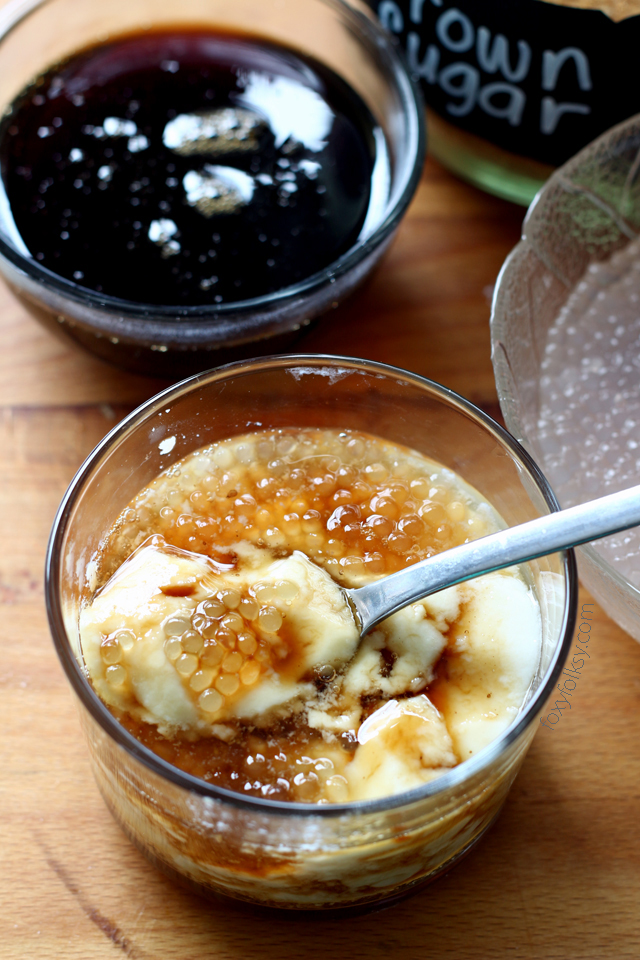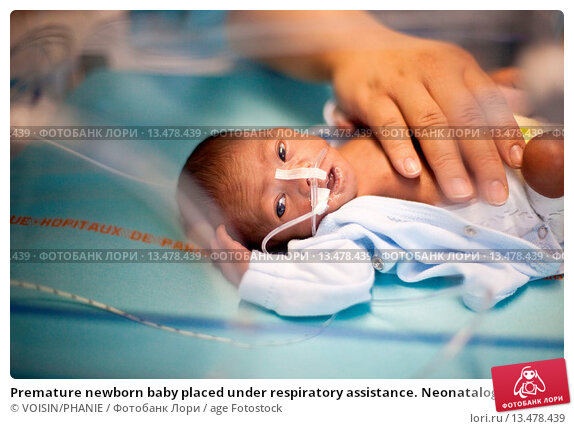Feeding babies citrus
What Parents Need to Know
At first glance, this might seem like an odd question. Why are we talking about oranges in particular? What makes them different from any other fruit you might feed your baby?
Well, when you think about it, they’re different in quite a lot of ways. Oranges, unlike bananas, pears, or melons, are a pulpy, stringy, citrus fruit. Those factors make a difference in when and how you should feed it your baby for the first time.
The most common age recommended for the introduction of citrus fruits is around 12 months. You want to be sure that your baby is older and successfully chewing foods before introducing oranges. Though pediatricians no longer recommend delaying a child’s exposure to foods to prevent allergies — in fact, it seems that eating some foods earlier may help prevent some reactions — the issue with oranges and other citrus fruit is not just possible allergies, but also the reaction that babies can have to the acidity and the risk of choking.
Here are some points to keep in mind.
Citrus fruits are acidic, which means when the fruit is metabolized it produces acid. Though adults’ stomachs can handle the acidity of an orange, babies’ stomach are much more sensitive and may not react well to the level of acidity.
If babies are given oranges too early, the acidity may, in some cases, cause diaper rash and redness around the mouth. This doesn’t necessarily mean that your baby has an allergy to the fruit. It’s simply a skin reaction to the acidity.
The acidity may also cause an upset stomach or increase acid reflux symptoms if your child has problems with acid reflux.
As with most parenting decisions, it’s best to use your common sense here. Do you or other members of your immediate family have food allergies? Has your child routinely suffered from acid reflux? Are you considering giving a large scoop of pulpy orange to a 2-month-old? In those cases, it would be wise to wait a little longer to give your child acidic fruits.
If, on the other hand, your child is around 12 months old and you have no reason to suspect they have allergies, then go ahead and dish it up.
One of the tricky parts of feeding babies oranges is the clear membrane that holds the sections together. Those can be hard for even adults to gnaw through.
You can try either cutting up each section into small pieces or peeling off the membrane yourself. For those of you who aren’t interested in an afternoon of membrane peeling, canned mandarin oranges are both small and have thin membranes.
You don’t have to worry that your baby isn’t going to get enough vitamin C just because they aren’t eating oranges. Babies only need around 35 mg of vitamin C per day. You can get that from a bunch of other baby-friendly fruits and vegetables, including:
- sweet potatoes
- watermelon
- strawberries
- peas
- papaya
- kale
Introduce oranges slowly and in small amounts. A few small spoonfuls a day might be a good place to start.
Watch for any reaction during the next two to three days. Look for reddening skin around the mouth and keep track of whether or not they develop a diaper rash. Diaper rashes may, of course, be unrelated to citrus fruits, but it’s important to pay attention just in case the two are related. If your child has hives, swelling, vomiting, wheezing, or trouble breathing, seek medical attention right away.
Make sure the pieces of orange are cut into very small pieces (e.g., smaller than the size of a dime.) And, always stay with your baby when they are eating.
Watch out for and remove the membrane and any seeds that might be difficult for your child to get down.
When you’re ready to move beyond slices, here are a few other ways to incorporate oranges into your baby’s meals:
- orange ice pops (this can be frozen orange juice or a mixture of pureed oranges and yogurt)
- orange juice and carrots (it sounds gross, but for some reason oranges bring out a special something in carrots)
- orange smoothies
- orange chicken
Introducing new foods to your child is one of the pleasures of that first year of parenting. Sometimes a few extra precautions are needed to make sure that your little one can enjoy them safely.
Sometimes a few extra precautions are needed to make sure that your little one can enjoy them safely.
Citrus and Oranges, When can baby have Citrus Fruits like Oranges? Learn about Citrus & Baby Food with the Age for Introducing Citrus to Baby
The Goodness of Oranges and Citrus Fruits
Unfortunately, oranges, like all citrus fruits, are acidic and are likely to give babies younger than 12 months old rashes. The acid can cause terrible diaper rashes and even rashes around the mouth an lips due to the high levels of acidity.
With that being said, many parents have offered their younger infants tastes of oranges, orange juice or other acidic fruits and have had no reactions.
If you want to introduce citrus earlier than by all means give it a try but please be on the lookout for possible reactions!
With new studies being released since 2008, the AAP now says that there may be no need to delay foods that are typically allergenic. This applies mostly to babies who have no known allergy/sensitivity risks.![]() If you wish to introduce citrus foods earlier than previously recommended, just watch for any reactions. As with other acidic foods, if your baby is prone to sensitivities with foods, you may want to wait to introduce Oranges until after his first birthday.
If you wish to introduce citrus foods earlier than previously recommended, just watch for any reactions. As with other acidic foods, if your baby is prone to sensitivities with foods, you may want to wait to introduce Oranges until after his first birthday.
We all know that oranges are high in vitamin C; did you know that one orange contains approximately 12% of the RDA for fiber too? Not just a great source of vitamin C, oranges have a myriad of vitamins and other nutrients that make them tops for a refreshing and healthy snack.
Oranges (one peeled medium sized navel orange)
| VITAMINS: Vitamin A – 346 IU Vitamin C – 82 mg Vitamin B1 (thiamine) – .09 mg Vitamin B2 (riboflavin) – .07 mg Niacin – .59 mg Folate – 48 mcg Contains some other vitamins in small amounts. | MINERALS: Potassium – 232 mg Phosphorus – 32 mg Magnesium -15 mg Calcium – 60 mg Sodium – 2 mg Iron – . Also contains small amounts of manganese, copper and zinc. |
What Fruits are Considered Citrus Fruits?
Oranges | Lemons | Limes | Grapefruits | Tangerines
Check out Citrus at Cooks Thesaurus for interesting citrus facts.
Pineapple is not Considered a Citrus Fruit – Can My Baby Eat Pineapple?
Pineapple is not a citrus fruit (it’s in the bromeliad family actually.) however it can be acidic. Processed pineapple tends to be less acidic due to the processing and sugar/syrup that it’s packed in; but I’m sure you’d rather not give your baby pineapple out of the can.
If your baby does not have any food intolerance’s and has shown no propensity to getting rashes due to foods, then you might give it a try around 10 months old. Many parents do feed their little ones pineapple around 8 months old.
For pineapple, mash it up and add it to yogurt, cereal, chicken (yum. ) even sweet potatoes. Pineapple tends to be fibrous and if it’s too fibrous, give it a gentle steam and see if it softens up enough for your baby.
) even sweet potatoes. Pineapple tends to be fibrous and if it’s too fibrous, give it a gentle steam and see if it softens up enough for your baby.
Can I use Citric Acid (Lemon Juice) for Freezing and Retarding Browning in Homemade Baby Foods?
A sensitivity to citric acids (like those in lemon, tomato, grapefruit, oranges) is generally not found after 12 months old.
Ascorbic Acid is Vitamin C and seldom will you find anyone with an allergy or severe sensitivity to Vitamin C. Ascorbic Acid is added to many fruits to boost the natural Vitamin C content of the fruit as is Citric Acid. These may also act as a preservative and works to stop fruits from turning browm.
Many people ask about the possibilities of allergies to these citrus acids – odds are, your baby will not have an allergy to these 2 compounds. Your baby may however, have a sensitivity to the acid. We are told to stay away from citrus fruits (such as oranges, pineapple, lemon et al) until baby is 10-12 months due mostly to the acidity of the fruit – diaper rash, skin rashes and tummy pains are some things that come from a sensitivity to citric acids – not due to any allergic reactions.
There is a big difference in using a drop or 2 of lemon juice as a preservative in a fruit purée. As the drop or 2 is spread throughout the purée and your infant will not be consuming the drops with each bite of fruit purée that is taken. It is entirely different than offering your baby a few slices of oranges or chopped tomatoes for example.
If your baby has displayed any food sensitivities, you should use caution when using citric acid to preserve fruits and when feeding your baby fruits that have been treated with citric acid. Here is a great link all about Freezing Fruits
Orange or Citrus Baby Food Recipes
Orange Puree?
Nope, I don’t recommend serving a baby pureed oranges. Would you eat pureed oranges? Why not peel, section the orange and then cut into small pieces? You may have to peel off the membranes – that stringy stuff that covers the “meat” of the orange before you serve it however.
Orange Yogurt Pops
Ingredients:
- 1 orange, peeled and seeded if necessary
- 1 cup plain whole milk yogurt
Directions:
Step 1: Puree the orange then add the yogurt and thoroughly whizz to combine.
Step 2: Transfer to ice pop molds or pour into ice cube trays and freeze until solid
YUMMY, healthy and cooling on a warm day. Pop a cube into a baby safe feeder/mesh feeder for a nice treat that is sure to soothe sore teething gums.
Orange Juicy Carrots
If you feel your baby might be able to handle oranges, try orange juicy carrots.
Ingredients:
- 1/2 pound carrots – peeled and diced
- 1/4 cup orange juice
- 1 cup water
Directions:
Step 1: Add 1 cup water and 1/4 cup orange juice to a 1/2 pound of peeled and diced carrots in a medium sized saucepan.
Step 2: Steam carrots until tender then add a pinch of cinnamon.
Step 3: Mash if needed
You can also combine the above and bake in a 375F degree oven until the carrots are fork tender – approximately 20-30 minutes. Baking carrots this way is truly tasty!
Foods Good to Mix With Oranges:
- Avocado
- Blueberries
- Cranberries
- Peaches
- Sweet Potato – orange juice is nice in a sweet potato souffle
- Chicken – Make an orange glaze
- Yogurt – make Orange Yogurt Freeze Pops.

Remember, always consult with your pediatrician regarding introducing solid foods to your baby and specifically discuss any foods that may pose allergy risks for your baby.
This site complies with the HONcode standard for trustworthy health information: verify here.
ORAL ALLERGY SYNDROME
The food on this page may be one involving OAS. OAS occurs when a person sensitive/allergic to pollen develops a reaction to fruits/veggies that have a similar type of pollen. Itching & swelling of the lips, the mouth and/or throat are typical symptoms. These symptoms normally appear within minutes of eating the offending food and may be worse during the spring and fall pollen seasons. Rarely is an OAS life threatening. Click below to learn more.
Birch Pollen Allergies
Birch pollen allergies are associated with apple, carrot, cherry, pear, peach, plum, fennel, walnut, potato, spinach, buckwheat, peanut, honey, celery, and kiwifruit.
Cedar Allergies
Japanese cedar allergies are associated with melon, apple, peach and kiwifruit.
Mugwort Allergies
Mugwort allergies are associated with celery, carrot, spices, melon, watermelon, apple, hazelnut, and chestnut.
Grass Pollen
Grass pollen allergies are associated with melon, tomato, watermelon, orange, rice and cherry.
Ragweed Pollen
Ragweed allergies are associated with melon, chamomile, honey, banana, and sunflower seeds.
Latex
Latex allergies may be cross-reactive to banana, avocado, kiwi and papaya.
SHARE ON FACEBOOK SHARE ON PINTEREST
Can tangerines be given to a 6-month-old baby?
Other related articles: pediatrician, complementary foods
-
adenovirus infection
-
Adenoids
-
Autism
-
Autism (RAS)
-
Bronchitis in children
-
Chickenpox
-
windmill parties
-
coxsackie virus
-
Questions to the pediatrician
-
Flu and SARS
-
Breast milk
-
Dacryocystitis
-
Children's painkillers
-
Diet for nursing
-
Medical examination at 1 year
-
Diphtheria in children
-
For expectant mothers
-
hardening
-
Hardening of children
-
Constipation in children
-
Foreign body of the bronchi
-
Infectious mononucleosis
-
Whooping cough
-
Measles in children
-
Rubella in children
-
Deprive a child
-
false croup
-
Tangerines for children
-
Children's massage
-
Meningococcal infection
-
Pediatrician at home
-
First year of life
-
Baby's first year
-
Nutrition for children 1-3 years old
-
Child nutrition
-
food allergy
-
Defeat the Flu
-
Preparation for vaccination
-
Food and allergies
-
Complementary foods for children
-
Child's bite
-
Walks in the cold
-
Allergen products
-
Teething
-
Rickets in children
-
The baby is ill
-
Rotavirus infection
-
mumps in children
-
Scarlet fever in children
-
Sleep with animals
-
Baby care
-
Phytotherapy in children
-
Enuresis
On the eve of the New Year celebration, many mothers are interested in the question: when can a baby be given a taste of the symbol of winter holidays - tangerine?
You may well treat a 6-month-old baby with a small piece of tangerine peeled from membranes and seeds. It is undesirable to replace tangerine with juice from it. According to international recommendations, juices should be introduced into complementary foods after a year. The fact is that juice is not the most nutritious product, it does not contain dietary fiber, but even a spoonful of freshly squeezed citrus juice already contains an amount of carbohydrates equal to several slices of tangerine.
It is undesirable to replace tangerine with juice from it. According to international recommendations, juices should be introduced into complementary foods after a year. The fact is that juice is not the most nutritious product, it does not contain dietary fiber, but even a spoonful of freshly squeezed citrus juice already contains an amount of carbohydrates equal to several slices of tangerine.
Watch your baby carefully when you introduce citrus fruits into the diet: these fruits can cause a skin reaction, in which case it will be necessary to keep a food diary and consult a doctor for recommendations.
In no case should you refuse to introduce new foods - citrus fruits, nuts, fish - for fear that this will cause allergies. Late exposure to allergens increases the risk of reactions!
There is no definite and clear age at which a child should begin to try specific foods - any vegetable, fruit, cereal or animal product - you can gradually offer complementary foods from the very beginning.
There are several criteria by which you can understand that your baby is ready to start eating new dishes:
The main thing is not to forget about the main points of the introduction of new products in complementary foods:
- One day - one new product. Offer the baby to diversify the diet gradually, he should have time to get acquainted with the new taste. Also, you may need to offer a new product several times with an interval of a couple of days, be patient.

- If the child is sick or not feeling well, do not introduce new meals. With a high probability, the baby will refuse and will demand the usual familiar food.
- We start our acquaintance with a new food with a small portion. In order to learn a new taste, the child only needs a test in the amount of "at the tip of a spoon"
- Consistency and shape of food. Animal food must be fully cooked, dairy products on the children's table are only allowed from boiled or pasteurized milk. Vegetables and fruits should be cut into pieces that are comfortable for chewing, seeds and hard films should be removed. Solid foods - cereals, vegetables cook until soft. It is not necessary to offer all new flavors in the form of puree, this does not form the child's habit of chewing food thoroughly.
Make an appointment with a pediatrician
For more details, consult a qualified specialist at the Semeynaya clinic.
For pediatrician appointment prices or other inquiries please follow the link below:
Labels Complementary foods Pediatrician
Complementary foods for a child - the introduction of fruit puree, fruits and juices into the diet of infants
Historically, fruit juice was recommended by pediatricians as a source of vitamin C, calcium, and other vitamins. The juice is delicious, sweet, children drink it with pleasure, and suddenly it turned out that there are potential risks: the high sugar content in the juice increases calorie intake, overweight and the risk of caries. More recently, about twenty years ago, doctors recommended the introduction of complementary foods, starting with juices and fruits. But now the situation has changed. Children's nutritionists believe that the optimal time for the introduction of juices is 1 year after the child gets used to the main complementary foods: vegetables, cereals, meat, fish, fruits. At the same time, you can find recommendations to give juices from 6 months or after 3 years. Carbohydrates, which are abundant in juice, change the child's appetite, but to get the required amount of vitamins, you need to drink a lot of it, about 1 liter! In addition, they do not give a feeling of satiety and the child may be prone to overeating.
At the same time, you can find recommendations to give juices from 6 months or after 3 years. Carbohydrates, which are abundant in juice, change the child's appetite, but to get the required amount of vitamins, you need to drink a lot of it, about 1 liter! In addition, they do not give a feeling of satiety and the child may be prone to overeating.
Administering fruit juice American Academy of Pediatrics recommendation: download
- Optimal to completely avoid the use of juice in infants under 1 year old;
- AAP and the American Academy of Pediatric Dentistry guidelines state that juice should be offered to babies in a cup, not a bottle, and that babies should not go to bed with a bottle in their mouth.
- They concluded that long-term exposure of the sugar contained in the juice to the teeth is the main factor influencing dental caries.
- After 1 year, fruit juice can be used as part of a meal or snack.
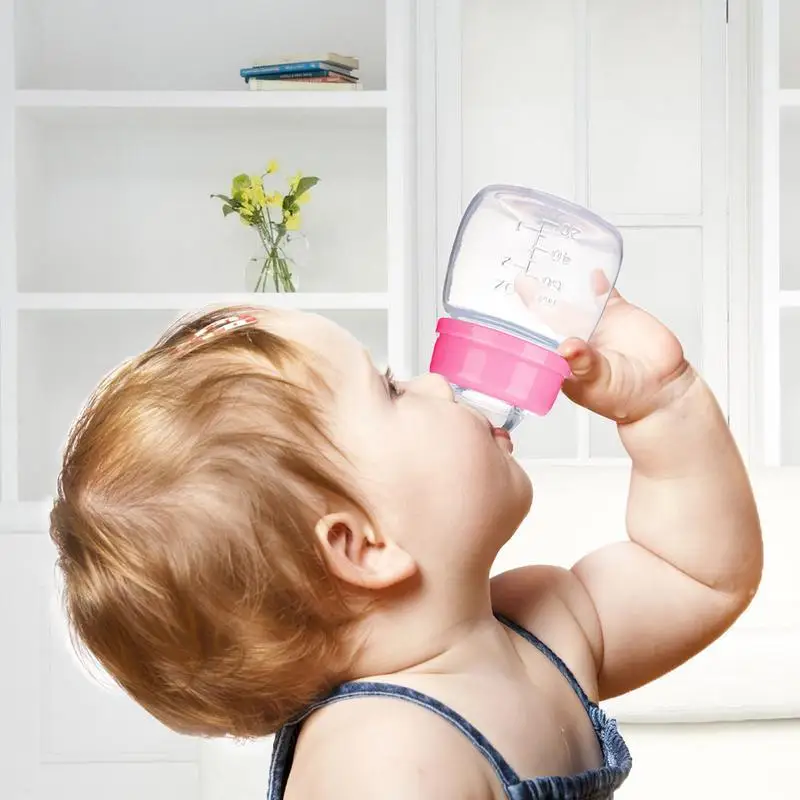 It should not be drunk like water during the day or used as a means to calm an upset child.
It should not be drunk like water during the day or used as a means to calm an upset child. - Do not give juices if the child has diarrhea, oral rehydration solutions only.
- The development of perioral rash in some children after feeding freshly squeezed citrus juice is most likely due to the chemical irritant effect of the acid.
- Diarrhea and other gastrointestinal symptoms that some children experience are most commonly associated with carbohydrate malabsorption.
- Although fruit allergy can develop at an early age, this is rare.
Baby food - fresh juices
Freshly squeezed juices are not recommended for children under one year of age. But there is no strict ban. Juice up to a year is not useful, unlike children older than one year . It contains a lot of fruit acid, which can lead to increased peristalsis and intestinal walls, pain, and digestive disorders.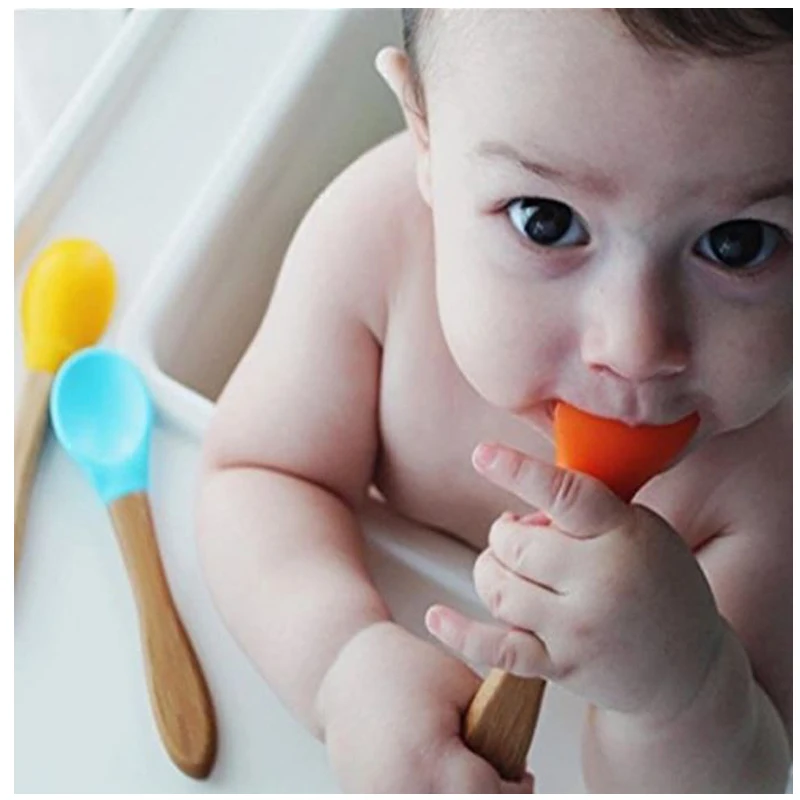 Dilute with water in a ratio of 1:1. And remember, fresh juice retains its maximum amount of vitamins in the first half hour, so do not store juice for later. With a later introduction of juice, their better tolerance is noted. This is due to the maturation of the mucosa of the gastrointestinal tract and its readiness for the absorption of juice. But even with this, the child may experience pain and bloating, regurgitation, and stool disorders. This is due to the presence of organic acids in juices, which have an irritating effect on the gastrointestinal tract.
Dilute with water in a ratio of 1:1. And remember, fresh juice retains its maximum amount of vitamins in the first half hour, so do not store juice for later. With a later introduction of juice, their better tolerance is noted. This is due to the maturation of the mucosa of the gastrointestinal tract and its readiness for the absorption of juice. But even with this, the child may experience pain and bloating, regurgitation, and stool disorders. This is due to the presence of organic acids in juices, which have an irritating effect on the gastrointestinal tract.
How to start adding juice to baby food?
First, a teaspoonful (about 5 ml) between feedings, observing the baby's reaction. For children under 3 years old, juices are recommended to be diluted with boiled or baby water in a ratio of 1:2. Freshly squeezed juices - up to 7-8 years. The amount of juice: from 1 year to 1.5 years - up to 100 ml, should not be exceeded. At 2 years - 200 ml.
It is best to give green apple or pear juice first. Juice from plums, apricots, peaches - it is better to give at an older age, they have a slight laxative effect.
Then you can give a mixture of juices from 2 or 3 fruits. You can give a mixture of cherry, cherry, currant, raspberry juice, orange juice, pineapple, mango, grapefruit and mixtures thereof. It is better to give grape juice from 5-6 years old, there are a lot of carbohydrates.
It must be remembered that:
- Apple, carrot and pear juice - strengthen
- Plum, pumpkin, apricot, peach - weakening
This can be used if there are digestive problems.
If we choose industrial juices - carefully read what is written on the label, there should be no artificial additives, dyes and preservatives.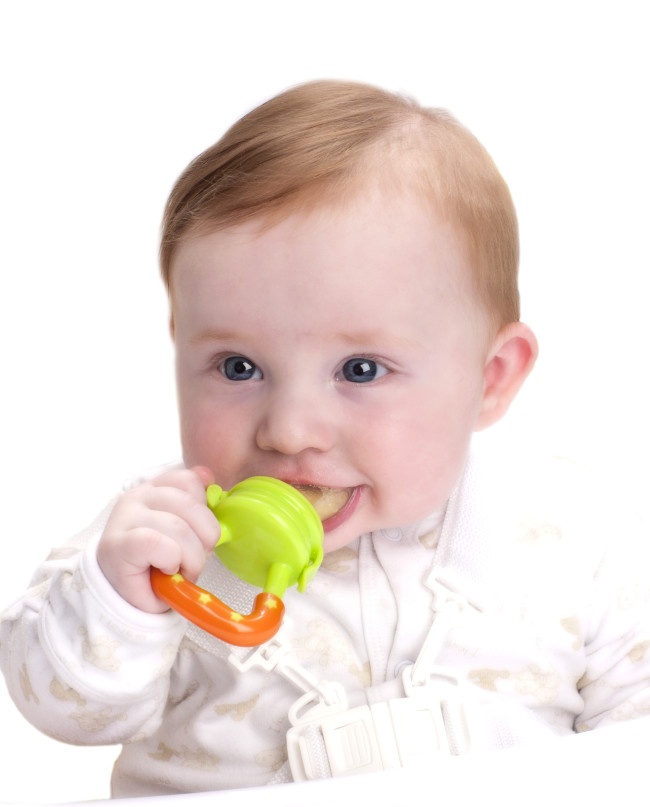 Do not use opened packages. Should I give industrial juices for baby food? Why not? They are made from high quality, proven, specially selected raw materials, production is strictly controlled, they have balanced compositions and optimal taste. Until the age of 3, buy juices for your child only marked “baby food” on the package.
Do not use opened packages. Should I give industrial juices for baby food? Why not? They are made from high quality, proven, specially selected raw materials, production is strictly controlled, they have balanced compositions and optimal taste. Until the age of 3, buy juices for your child only marked “baby food” on the package.
Introduction of fruit and fruit puree - European recommendations
If your little child has already tasted vegetables and accepted them, it's time for fruit. The season is always for them, but the best is in autumn, when the most delicious apples, pears and plums appear. Fresh fruits from all over the world are available in stores all year round, but it's worth starting with seasonal, locally grown ones. And these are: apricots, raspberries, apples, pears, plums. They contain not only vitamins, dietary fiber, but also minerals, including valuable microelements, which should be present in the child during the expansion of the diet.
Fruit is usually recommended from 6-7 months of age. Complementary foods often begin with fruit or vegetable purees. But it is better to start with vegetables. Fruit puree tastes better, is sweeter, and the child may then eat vegetables worse. But vegetable puree will not affect the baby's desire to eat fruit dishes. Therefore, more often pediatricians are advised to give fruit dishes after the introduction of vegetables and cereals. Start complementary foods with fruits in the form of mashed apples or bananas or pears. Then you can add fruits that grow in your area of \u200b\u200bresidence. Then you can include fruit and fruit and vegetable mixtures.
Trendy but exotic fruits or with strong flavors - strawberries, mangoes, kiwis, currants - should be introduced later. But there is no strict ban.
Fruit puree should be started with 1 teaspoon in the morning, increasing to 100 g over 2 weeks.
Homemade or factory made? As you wish, subject to the basic hygiene rules of cooking. If you have time, make your own fruit puree. Plums, apricots, banana can be mashed in a mortar or blender. Grate apples and pears on a fine plastic grater. For the first time, the apple can be boiled, then it will be soft. Pour the prunes with boiling water and leave for 15 minutes. Do not add sugar!
If you have time, make your own fruit puree. Plums, apricots, banana can be mashed in a mortar or blender. Grate apples and pears on a fine plastic grater. For the first time, the apple can be boiled, then it will be soft. Pour the prunes with boiling water and leave for 15 minutes. Do not add sugar!
Homemade fruit puree - don't forget about hygiene
Pour boiling water over a grater, preferably plastic or a blender, wash and peel the fruit.
Gradually make the fruit puree coarser.
Start with liquid puree, at 8 months to finely ground puree, at 10 months of age. - puree from larger particles.
When the child has 6-8 teeth, you can give pieces of fruit and he will eat them on his own.
Properties of various fruit purees
- Banana puree is a good source of trace elements: magnesium and potassium, calcium, iron and phosphorus.
 Bananas rarely cause allergic reactions
Bananas rarely cause allergic reactions - Prune puree can act as a mild laxative that increases intestinal motility. Contains potassium, vitamins B1 (thiamine), B2 (riboflavin).
- Blueberry puree contains tannin - tannin, contains pectin, which has a disinfectant and anti-inflammatory effect, contains a large amount of provitamin A - beta-carotene, which is good for vision, manganese. In addition, blueberries are low allergenic. Apricots are an excellent source of potassium, carotene, vitamin C and pectin.
Advice from Nyankovskih Healthy Child University
- Fruits are sweet and can be used instead of sweets.
- Fruits should be included in the child's diet as the second food group after vegetables. They can be given quite early, when the baby is four months old (between 17 and 26 weeks of age).
- Initially it can be a mousse (or puree from a jar) and then an apple scraper with a spoon.


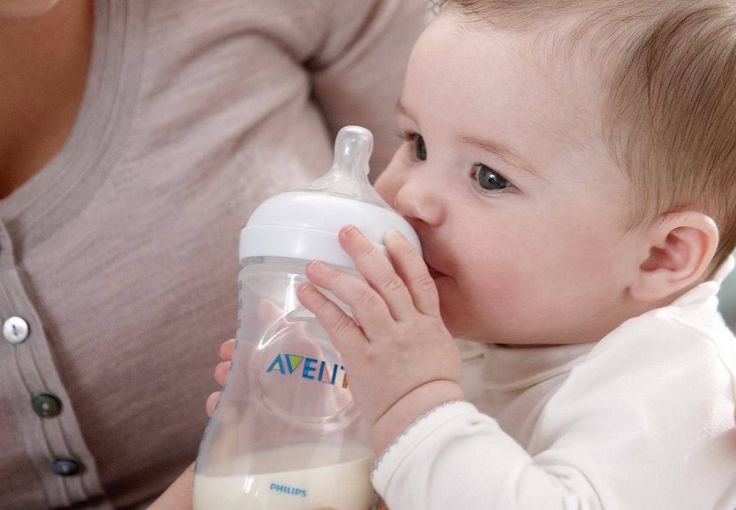 18 mg
18 mg

